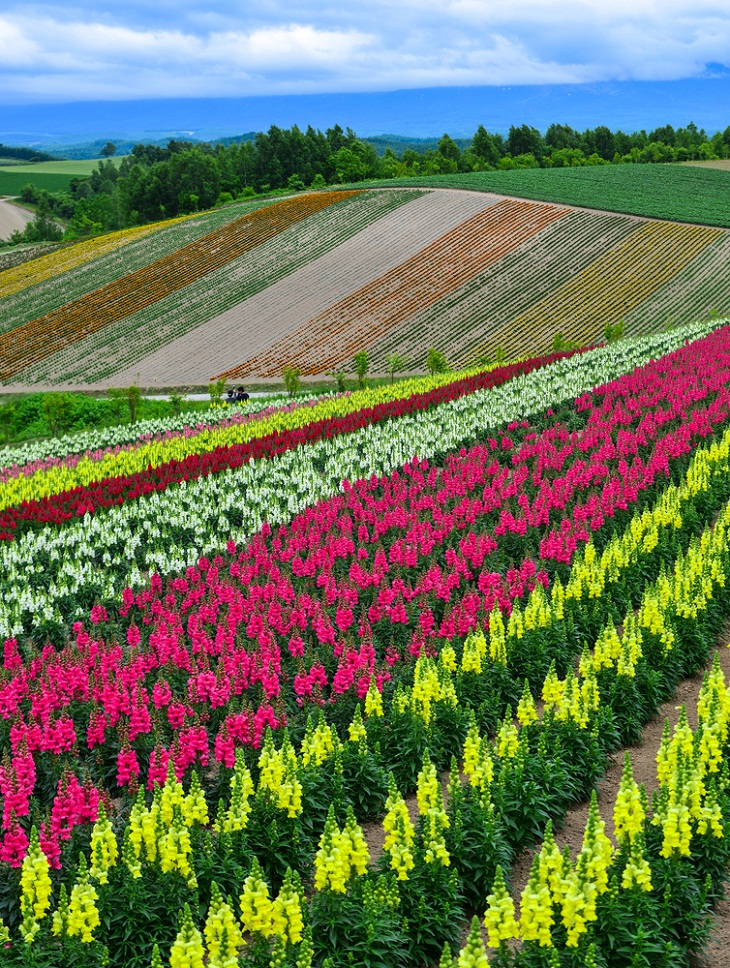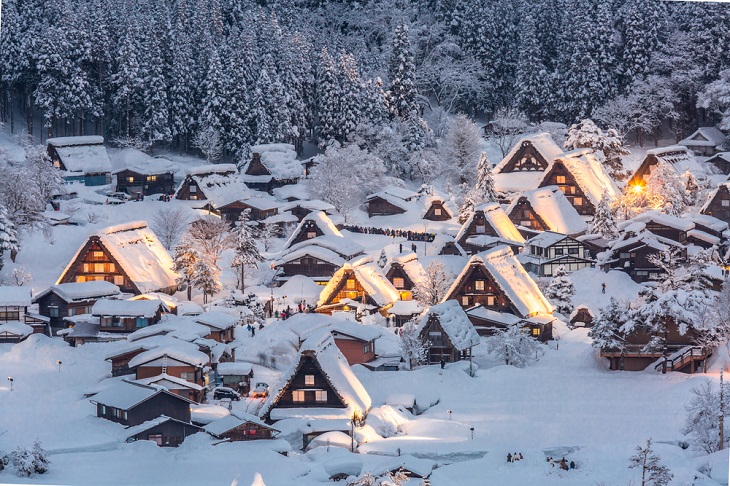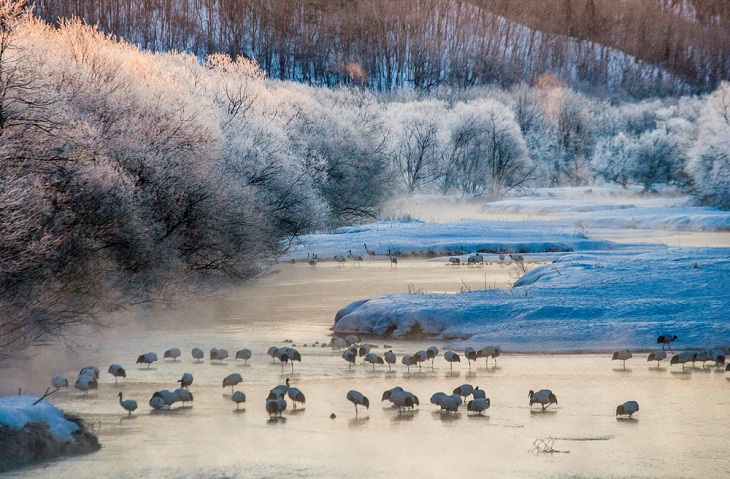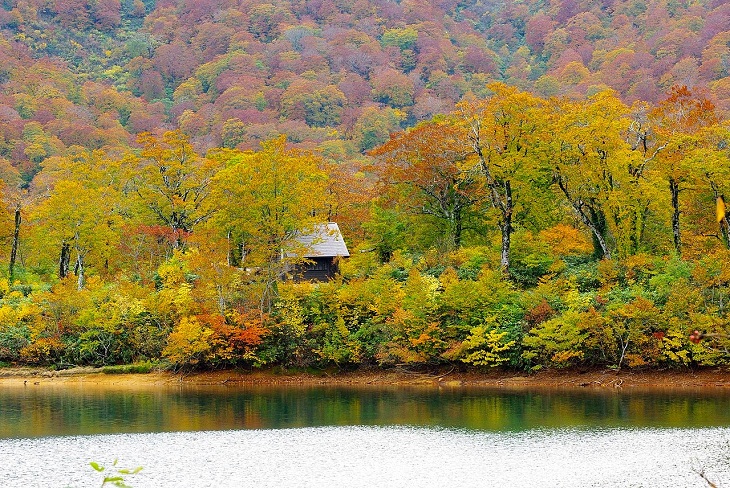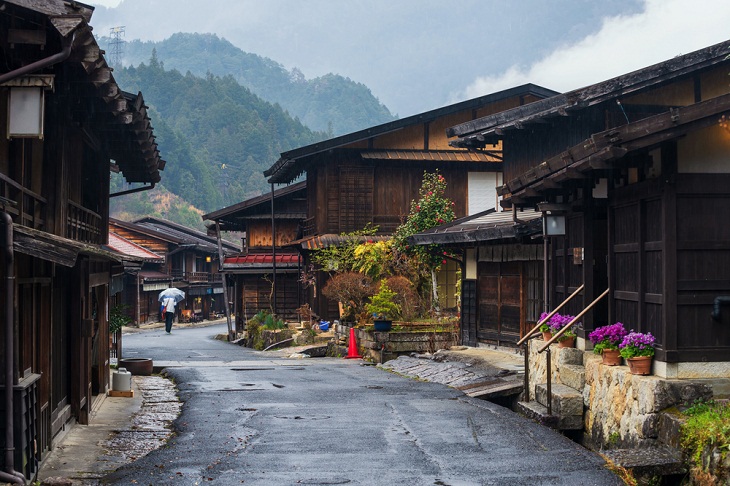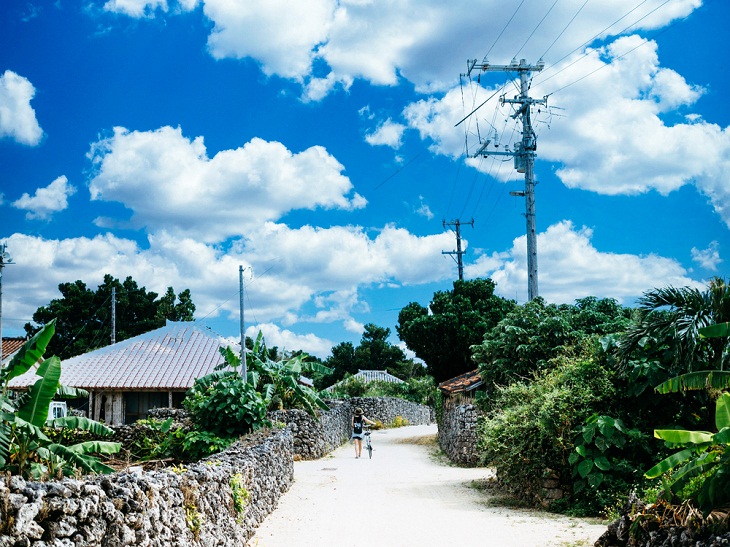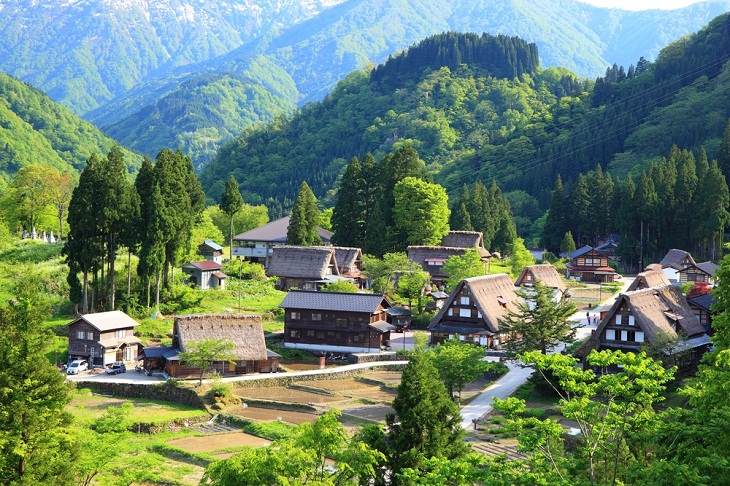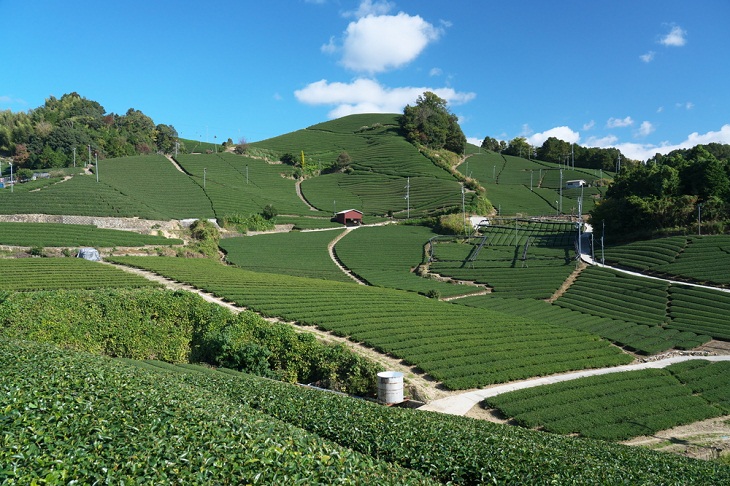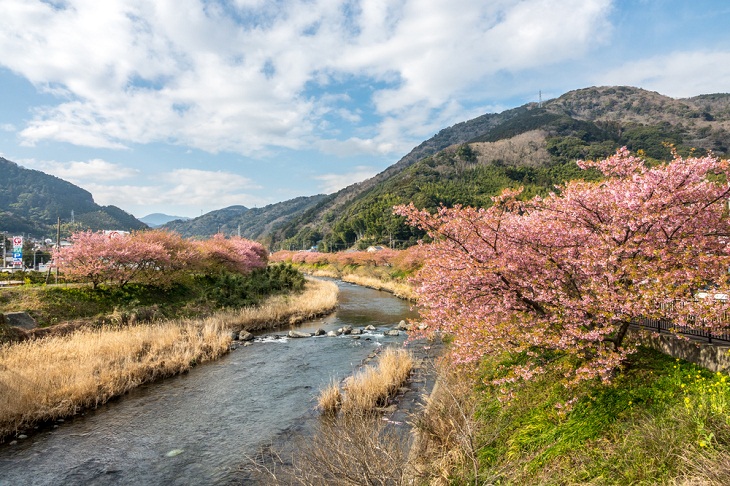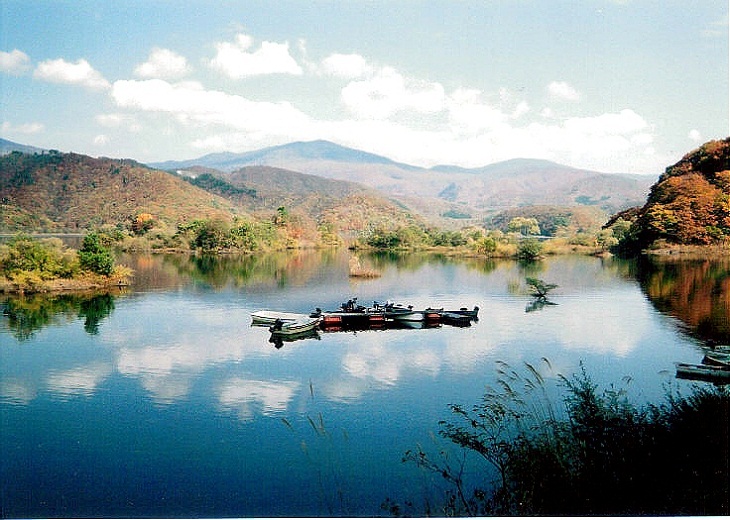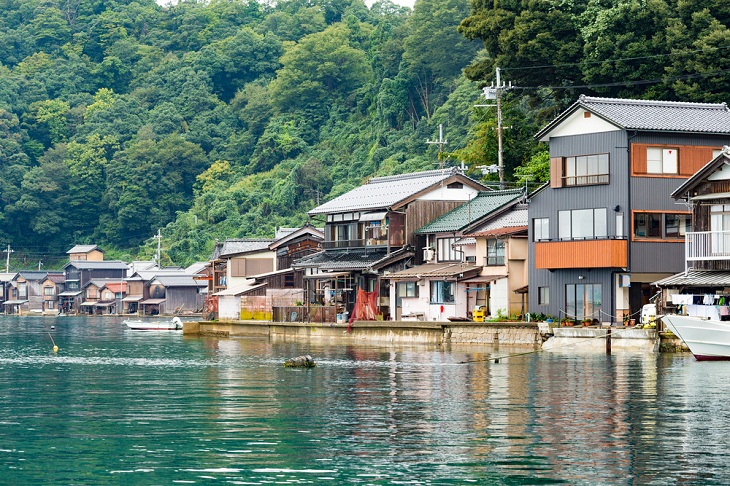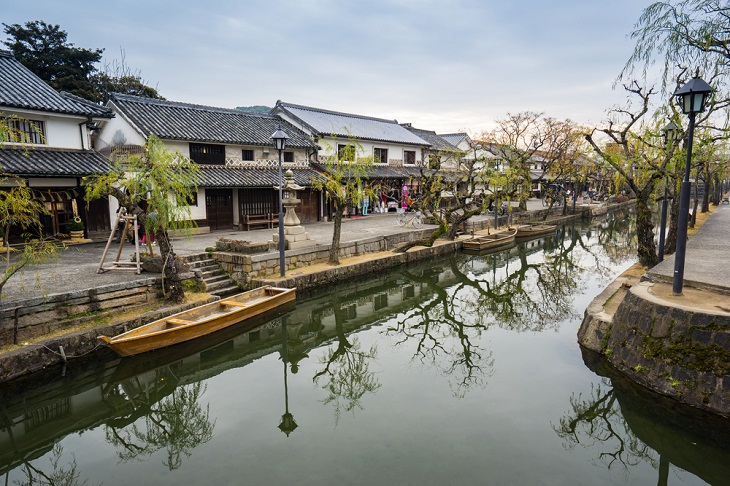Biei is a picturesque town located in the heart of Hokkaido, Japan's northernmost island. This delightful village is nestled in a valley surrounded by rolling hills and lavender fields, making it a popular destination for nature lovers and photography enthusiasts.
Biei's landscape changes with the seasons, each offering unique beauty. In spring, the town is blanketed with cherry blossoms, while summer brings the vibrant colors of sunflowers and lavender. Fall is a sight to behold as the trees turn golden and crimson, and in winter, snow covers the fields like a white blanket.
One of the town's most famous landmarks is the Biei Blue Pond, which is known for its vibrant blue color that changes depending on the light and time of day. The pond is surrounded by trees and rocks, making it a wonderful sight to see.
In addition to its natural beauty, Biei also offers fresh produce, including melons, corn, and potatoes. The town has a vibrant food scene, with many restaurants and cafes serving delicious Hokkaido cuisine.
Overall, Biei is a must-visit destination for anyone looking to experience rural Japan. From its breathtaking landscapes to its rich culture and cuisine, there's something for everyone in this enchanting town.
2. Shirakawa-go
Shirakawa-go is a picturesque village located in the mountains of Gifu Prefecture, Japan. It is famous for its unique architecture, which features traditional gassho-zukuri farmhouses with steep thatched roofs that resemble hands clasped in prayer. These structures were originally built to withstand heavy snowfalls and have become a symbol of the village's cultural heritage.
Visitors to Shirakawa-go can take a stroll through the village and marvel at the intricate wooden structures, many of which are over 200 years old. The village is particularly beautiful in the winter months when the roofs of every house are covered in snow, and the surrounding mountains are blanketed in white.
Shirakawa-go can also be visited for its local cuisine, which includes dishes such as soba noodles made from buckwheat grown in the region, and hoba miso, a type of miso paste grilled on a magnolia leaf.
3. Tsurui
A quaint village located on the eastern coast of Hokkaido, the northernmost island of Japan, Tsurui is a popular destination for tourists. It is famed for its magnificent natural surroundings and its population of endangered red-crowned cranes, which are regarded as a Japanese national symbol.
Tsurui's heavenly scenery, featuring rolling hills, pristine lakes, and vast wildflower fields, is a sight for sore eyes. Also worth a visit is the Tsurui-Ito Tancho Sanctuary, a protected area where red-crowned cranes can be observed up close in their natural habitat. The sanctuary offers guided tours and informative exhibits, allowing visitors to learn more about these majestic birds and their conservation.
Tsurui is also home to several cultural sites. One of them is the Tsurui Dosanko Farm, a traditional Hokkaido-style farm where visitors can experience rural life and try activities like milking cows and making butter. The village also hosts a popular crane festival each winter, featuring performances, food stalls, and traditional crafts.
If you are interested in outdoor activities, Tsurui offers a variety of opportunities for hiking, fishing, and bird-watching. Visitors can also enjoy spectacular views of the surrounding landscape by taking a scenic drive along the Kushiro River.
4. Higashinaruse
Known for its beautiful natural scenery, hot springs, and traditional rural culture, Higashinaruse is a hidden gem located in Japan's Akita Prefecture.
One of the village's most popular attractions is the Yokote Kamakura Festival, which takes place each February. During the festival, locals create igloo-like structures called kamakuras, which are decorated with lanterns and filled with offerings such as sweet sake and mochi. Here, you can enjoy traditional festival foods like grilled mochi (glutinous rice cake) and warm amazake (a traditional Japanese drink made of fermented rice).
Another must-see destination in Higashinaruse is the Oyasukyo Gorge, a scenic canyon filled with natural hot springs. Take a moment to soak in the warm, mineral-rich waters and enjoy the bewitching views of the surrounding mountains and forests.
The village is home to several historic shrines and temples, including the Kakunodate Samurai District, where visitors can see the traditional homes of samurai families from the Edo period (which refers to the period from 1603 to 1868 when the Tokugawa family ruled Japan).
5. Karuizawa
Karuizawa in Nagano Prefecture is famous for its dazzling natural scenery and luxurious vacation homes.
Karuizawa offers plenty of hiking trails and other outdoor activities. Shiraito Falls, a breathtaking waterfall surrounded by lush greenery, is a popular spot for nature enthusiasts. The Usui Pass Observation Platform, located at the top of a mountain pass, offers irresistible panoramic views of the surrounding landscape.
Karuizawa is also home to several unique and quirky attractions. One such attraction is the Karuizawa Picture Book Museum, a museum dedicated to picture books from around the world. Visitors can see original illustrations, attend workshops, and even make their own picture books.
Another fun attraction here is the Kumoba Pond, a tranquil lake surrounded by lush greenery and waterfalls. Visitors can rent a rowboat and paddle around the tranquil waters, or simply enjoy a picnic on the shore.
6. Nagiso
People looking to experience rural Japna's authentic charm need not look further than Nagiso. Nestled in the Kiso Valley, Nagiso is a small village boasting captivating natural beauty and traditional Japanese charm. With its serene rivers, lush forests, and scenic rice paddies, the village is an idyllic retreat for those seeking some quiet time. Visitors can also explore the village's historic streets and buildings, including the famous Tsumago-juku post town, which dates back to the Edo period.
One of the village's main attractions is the Nakasendo Trail, a historic road that connected Tokyo to Kyoto during the Edo period. Hike along the trail and enjoy stunning views of the surrounding mountains and forests.
Nagiso also boasts a number of beautiful temples and shrines, like the Zozan-jinja Shrine, which offers a panoramic view of the Kiso River valley. You can also visit the Nagiso Natural Museum, which showcases the unique flora and fauna of the region.
7. Taketomi
Taketomi is located on a small island called Taketomi Island in Okinawa Prefecture, Japan. It's the kind of place that looks like it's straight out of a postcard, with its traditional red-tiled roofs, white sand roads, and coral stone walls.
To explore this wonderful place, you can rent a bicycle or hop on a water buffalo cart, a traditional mode of transportation used on the island for centuries. Riding on a water buffalo cart is a great way to experience the slow pace of life on the island and take in the stunning scenery along the way.
Among Taketomi's other attractions are the village's beautiful traditional houses made of red clay and decorated with mythical Shisa statues, said to ward off evil spirits. You can walk along the village's sandy paths and take in the beautiful architecture and peaceful atmosphere.
Taketomi Island is surrounded by beautiful coral reefs, which can be explored by snorkeling or diving. Take a boat tour to nearby Iriomote Island, where you can see waterfalls, mangrove forests, and rare wildlife like the Iriomote cat.
Taketomi also has a rich history and cultural heritage, which can be experienced by visiting the village's traditional Ryukyu houses or attending a local festival, like the Taketomi Island Festival, which features traditional music, dance, and food.
8. Ainokura
Ainokura, located at an elevation of 400 meters (1,312 feet), is a UNESCO World Heritage Site in the mountains of Toyama Prefecture's Gokayama district on the main island of Honshu. The village has preserved the historical landscape of Gokayama as well as its original Gassho-zukuri architectural style (characterized by a thatched, steeply slanting roof). These houses resemble hands joined in prayer and were designed to withstand the heavy snowfall in the region.
Ainokura's pleasing mountain scenery cannot be missed. Take a hike along the nearby trails and enjoy gorgeous views of the surrounding mountains and valleys. In winter, the village transforms into a snowy wonderland, ideal for skiing and snowshoeing.
The village is acclaimed for its delicious soba noodles, made with locally sourced buckwheat flour. You can also sample local sake and other traditional Japanese dishes at the village's restaurants and cafes.
Ainokura is also a great place to learn about traditional Japanese crafts. Visitors are welcome to try their hand at making washi paper, a traditional handmade paper that has been used in Japan for centuries. They can also learn about indigo dyeing, pottery, and other crafts that are still practiced in the region.
9. Wazuka
An idyllic hidden gem nestled in the lush green hills of Kyoto Prefecture, Wazuka is known for its beautiful tea fields and traditional Japanese architecture.
The village produces some of the finest green tea in Japan. People can tour the tea fields and learn about traditional tea-making. They can even participate in tea-picking and enjoy a cup of freshly brewed tea with a divine view of the surrounding hills.
Another attraction in Wazuka is its traditional Japanese architecture. This village's narrow streets and beautifully preserved machiya townhouses (with narrow fronts and deep interiors resembling an eel's long shape) date back to the Edo period.
The most convenient way to enjoy your time in Wazuka is to rent a bicycle and explore the village at your own pace, stopping to admire the scenic beauty and atmosphere. While here, you can also indulge in sweet treats like wagashi, a traditional Japanese confectionery made with bean paste and rice flour.
10. Yoshino
Yoshino is well-known for its incredible seasonal views and its delightful cherry blossoms. Located in the mountains of Nara Prefecture, Yoshino's landscape is transformed into a pink paradise every spring as thousands of cherry trees burst into bloom, creating a breathtaking sea of pink and white petals. The sight is truly magical, and visitors from all over the world come to Yoshino to witness this spectacular event.
Yoshino has a rich tradition of Shinto and Buddhist practices, where one can explore the many temples and shrines that dot the landscape. One of the most famous is the Kinpusen-ji Temple, one of the largest wooden structures in Japan and a designated UNESCO World Heritage Site.
The village is surrounded by spectacular mountain scenery and is a popular hiking and mountain-riding destination. You can also take a relaxing dip in the town's hot springs or explore the nearby Yoshino-Kumano National Park, which is home to some of the most striking natural landscapes in Japan.
11. Kitashiobara
Experience the best of Japan's traditional countryside with Kitashiobara, a magical little town located in Fukushima Prefecture. It is famous for its breathtaking natural beauty, especially its mountains, lakes, and woods.
Kitashiobara's rich history and cultural heritage are special. The town is home to several historic sites, including old samurai residences and temples. Kitashiobara's special feature is its hot springs, or "onsen." The town has several onsen resorts where guests can relax and soak in the natural hot springs while taking in the beautiful scenery. These hot springs are said to have healing properties, and many people come here specifically to experience them.
One of the most beautiful places in Kitashiobara is Lake Akimoto, surrounded by stunning mountains and forests. Ice fishing, snowshoeing, and other winter activities are available on the lake during the winter.
Finally, Kitashiobara is a town that values its natural beauty and is committed to preserving it for future generations. The town has several eco-friendly initiatives, including a program to reduce waste and promote sustainable tourism.
12. Ine
Located between the mountains and Ine Bay, Ine is a small seaside town with about 1,900 residents. What makes Ine so special is its unique and traditional fishing style, which has been passed down for generations. Known as funaya, the town's fishing boats are designed to serve as both residences and fishing vessels.
The town's fishing village is built on a narrow strip of land between the sea and the mountains, and the traditional houses with their distinctive boat garages lining the waterfront create a truly impressive scene. Ine offers exquisite views of the Sea of Japan and the surrounding mountains.
You should also try tsukudani if you visit Ine. It is a type of preserved seafood that is popular as a souvenir among tourists.
13. Kurashiki
A beautiful historic town located in Okayama Prefecture, Kurashiki is renowned for its well-preserved Edo-period architecture and charming streetscapes. One of the most striking features of the town is the alluring canal area, lined with weeping willows and traditional wooden warehouses. Boat rides along the canal or strolls along the canal walkways will remain with you for a lifetime.
Kurashiki also boasts many historical sites and museums that offer a glimpse into the town's rich cultural heritage. The Ohara Museum of Art, for example, houses an impressive Western art collection, including works by Monet, Gauguin, and Picasso. Meanwhile, the Kurashiki Folkcraft Museum features an extensive collection of traditional Japanese crafts, such as lacquerware, pottery, and textiles.
A local specialty of Kurashiki is the Kurashiki kibi dango, which is a sweet millet-flour dumpling. The town's many restaurants and cafes offer a variety of dishes featuring local ingredients, such as fresh seafood and vegetables grown in the surrounding countryside.

